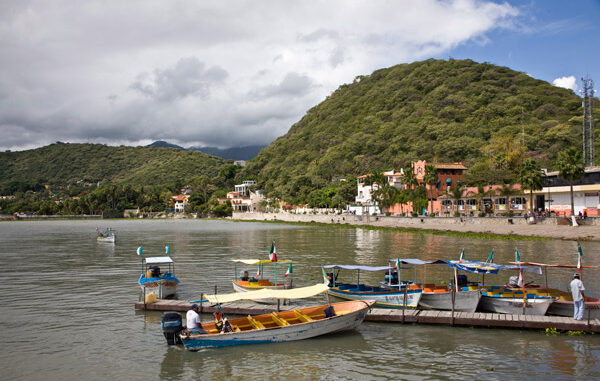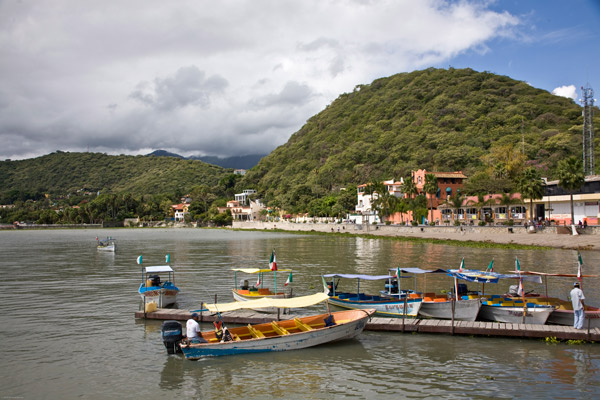

Richard Nowitz/National Geographic/Getty Images
A view of Lake Chapala near Guadalajara
Lake Chapala, located in west-central Mexico, is Mexico’s largest freshwater lake. It stretches 48 miles east to west, 10 miles north to south, and covers 417 square miles. Because of its picturesque setting, good fishing, and pleasant climate, it attracts vacationers from all over, as well as retirees from the United States. For years it has been used to supply water to Mexico’s second largest metropolitan area, Guadalajara. The water level in the lake has fallen and risen significantly over many decades, due to periods of severe droughts followed by periods of above-normal rain. This rise and fall has had an impact on pollution, and the ability of local residents to fish in its waters. Between 2010 and 2013, Harvard University ran a study called Proyecto Chapala, which taught local residents about water conservation, possible health effects of polluted water, and other public health issues.
Explore More:
Consider the importance of a water supply for a major city like Guadalajara. Research the many ways cities use water other than for drinking. How might the lake’s rising and falling water levels affect the city’s use of water? How might it affect the city’s future?